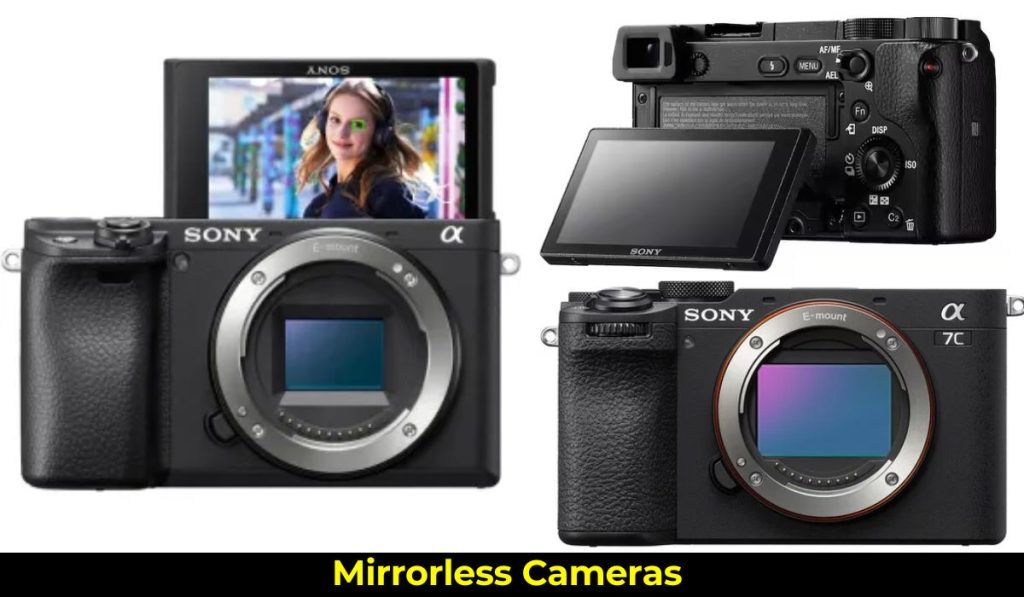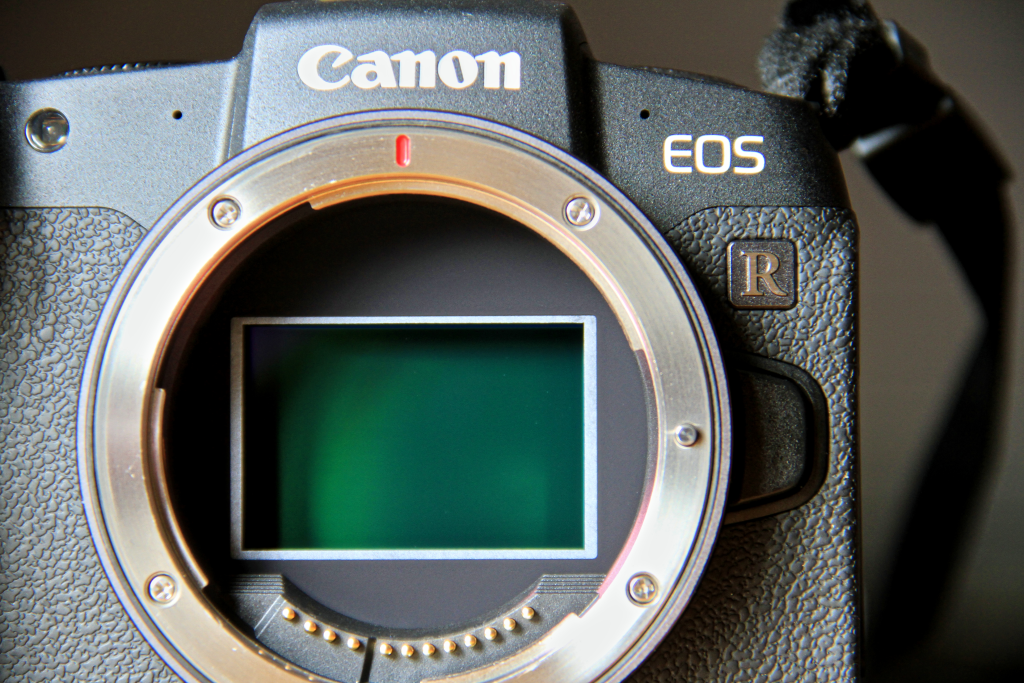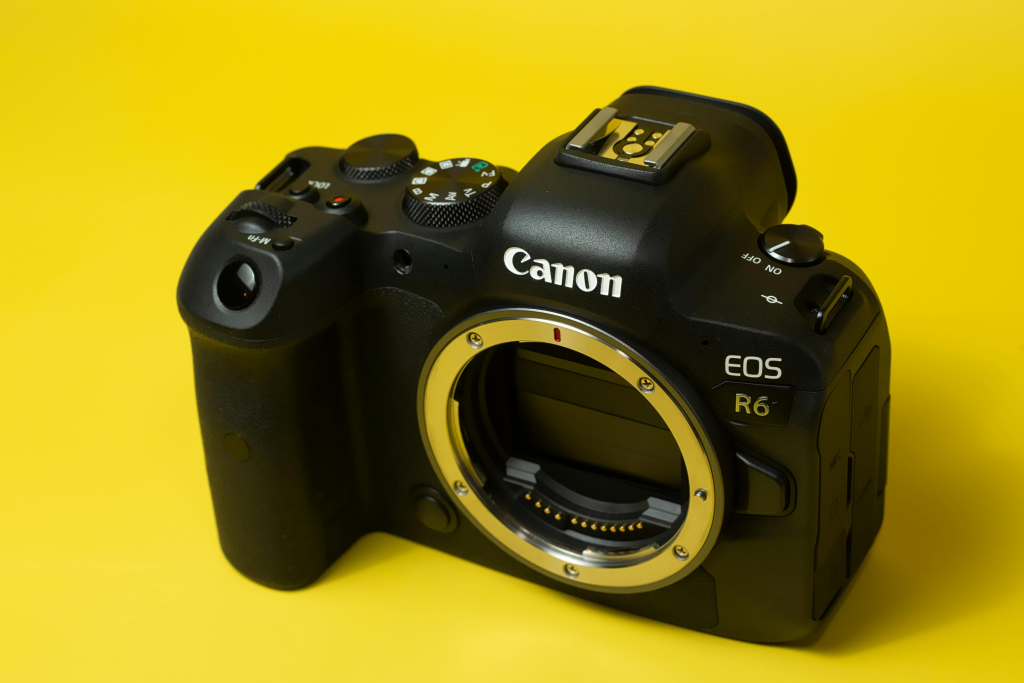
Mirrorless cameras (MILCs) have taken the photography world to the next stage, offering a compelling alternative to traditional DSLRs (Digital Single Lens Reflex). This guide dives deep into the world of mirrorless cameras, exploring the key facts you need to know, along with essential configuration tips and real-world user experiences.
Mirrorless vs. DSLR: Understanding the Core Differences
The most significant difference between mirrorless and DSLR cameras lies in the internal mechanism. DSLRs utilize a pentaprism or mirror to reflect light from the lens to the optical viewfinder, allowing you to see exactly what the lens captures. When you press the shutter button, the mirror flips up momentarily, exposing the sensor to capture the image.
Mirrorless cameras, on the other hand, lack a mirror and optical viewfinder. Instead, light travels directly from the lens to an electronic sensor. The image captured by the sensor is then displayed on a high-resolution electronic viewfinder (EVF) or a rear LCD screen, giving you a real-time view of the scene with applied settings.

This difference translates to several key advantages for mirrorless cameras:
- Smaller and lighter: Without the bulky mirror assembly, mirrorless cameras are generally more compact and lighter than DSLRs, making them ideal for travel, street photography, and situations where portability is a priority.
- Electronic viewfinder (EVF) benefits: Modern EVFs offer a high refresh rate, allowing you to see the effects of your settings (aperture, shutter speed, ISO) in real-time before capturing the image. Additionally, EVFs can display helpful information like focus peaking and zebra stripes for exposure warnings.
- Silent operation: The absence of the mirror-slapping mechanism makes mirrorless cameras significantly quieter than DSLRs. This is crucial for situations where silence is necessary, such as wildlife photography or candid street photography.
Also Read: 23andMe Hacked – A Breach of Trust in Genetic Data
However, mirrorless cameras also have some drawbacks:
- Battery life: EVFs and LCD screens consume more power than optical viewfinders. While battery life has improved significantly, DSLRs generally offer longer shooting times on a single charge.
- Viewfinder experience: Some photographers prefer the traditional optical viewfinder experience offered by DSLRs. EVFs, while improving constantly, can still have limitations in low-light situations or when dealing with fast-moving subjects due to refresh rate constraints.
- Lens selection: While the selection of lenses for mirrorless cameras is rapidly expanding, DSLRs still boast a wider range of compatible lenses, especially from third-party manufacturers.
Mirrorless Camera Configurations: Choosing the Right Setup
Selecting the right mirrorless camera setup depends on your photography style and budget. Here’s a breakdown of the key components:
- Sensor size: Mirrorless cameras come with various sensor sizes, from the smaller Micro Four Thirds (MFT) format to the larger APS-C and full-frame sensors. Larger sensors generally offer better low-light performance, shallower depth of field, and higher image resolution. However, they also come with a higher price tag and often require larger, heavier lenses.
- Camera body: The camera body houses the sensor, image processing engine, and controls. Consider factors like weather sealing, ergonomics, autofocus capabilities, and available shooting modes when choosing a body.
- Lenses: Lenses are arguably the most crucial element for image quality and shooting style. Explore options like prime lenses for low-light and portraiture or zoom lenses for versatility. Consider the lens mount system of the camera brand you choose, as lenses are not generally interchangeable across different systems.
User Experience: Here’s what real people have to say about using mirrorless cameras:
- Sarah, a travel photographer: “I switched to a mirrorless camera for its portability. It’s a lifesaver when I’m hiking or exploring new cities. The EVF helps me compose shots perfectly, and the silent operation is fantastic for capturing candid moments.”
- Mark, a wildlife photographer: “The autofocus on my mirrorless camera is incredibly fast and accurate, allowing me to capture fleeting wildlife moments with ease. The EVF displays helpful focus peaking for critical wildlife shots.”
- Jane, a portrait photographer: “I love the image quality I get from my full-frame mirrorless camera. The low-light performance is amazing, and I can achieve beautiful bokeh effects for stunning portraits.”

Applications of Mirrorless Cameras
Mirrorless cameras have carved a niche in various photography applications, thanks to their unique capabilities. Here’s a deeper dive into how mirrorless cameras excel in different shooting scenarios:
Travel Photography:
- Compact and Lightweight: Mirrorless cameras are a dream come true for travel photographers. Their smaller size and lighter weight make them easy to carry around all day, especially when exploring new locations on foot. No more lugging around heavy camera bags that weigh you down.
- Image Quality: Modern mirrorless cameras, especially those with larger APS-C or full-frame sensors, deliver exceptional image quality. Capture stunning landscapes, vibrant cityscapes, and detailed cultural encounters with impressive resolution and dynamic range.
- Fast and Accurate Autofocus: Keeping up with the fast pace of travel is no problem with mirrorless cameras. Their advanced autofocus systems lock onto subjects quickly and precisely, ensuring you never miss a fleeting moment.
Street Photography:
- Discreet Operation: The silent shutter of mirrorless cameras allows you to blend into the background on the streets. Capture candid moments and natural expressions without the noise of a traditional DSLR shutter startling your subjects.
- Tilting Screens and Touchscreen Focus: Many mirrorless cameras offer tilting or articulating screens, perfect for composing shots from unusual angles or low-down positions, common in street photography. Touchscreen focus lets you tap on your subject for precise focus, ideal for capturing fast-moving elements on the street.
- Fast Lens Options: Mirrorless cameras pair well with a wide range of fast prime lenses. These lenses excel in low-light situations often encountered in street photography, allowing you to capture sharp images without a flash, preserving the natural ambience of the scene.
Portrait Photography:
- Shallow Depth of Field: Larger sensor mirrorless cameras can achieve a beautiful bokeh effect, blurring the background and drawing attention to your subject. This is ideal for creating stunning portraits that make your subject pop.
- Eye-Detection Autofocus: Advanced mirrorless cameras offer eye-detection autofocus, ensuring your subject’s eyes are always in sharp focus, even in portraits with shallow depth of field. This eliminates the frustration of blurry eyes in otherwise perfect portraits.
- High-Resolution Sensors: Capture every detail in your portraits with the high-resolution sensors found in many mirrorless cameras. This allows for exceptional clarity and the ability to create large prints without sacrificing quality.
Event Photography:
- Fast Burst Modes: Mirrorless cameras often boast impressive burst shooting modes, capturing multiple frames per second. This is ideal for capturing fleeting moments of action during events, like weddings, sports games, or live performances.
- Silent Shooting: The silent shutter of mirrorless cameras is a game-changer for event photography, especially weddings or ceremonies where maintaining a quiet atmosphere is crucial. You can capture candid moments without disrupting the flow of the event.
- Image Stabilization: Many mirrorless cameras feature built-in image stabilization, helping to reduce camera shake and produce sharper images, even in low-light situations common at some events.
Videography:
- 4K and Beyond: Modern mirrorless cameras are powerhouses for videography. Many offer high-resolution recording capabilities, capturing stunning 4K or even 8K footage for professional-looking videos.
- Focus Peaking and Zebra Stripes: Mirrorless cameras provide helpful visual aids like focus peaking and zebra stripes for videographers. Focus peaking highlights sharp areas in the frame, ensuring critical elements stay in focus. Zebra stripes indicate areas of overexposure, preventing blown-out highlights in your videos.
- Log Profiles: Some mirrorless cameras offer Log recording profiles, capturing footage with a flat color profile that allows for greater flexibility and color grading in post-production.
Wildlife Photography:
- Fast Autofocus and Tracking: The lightning-fast autofocus systems of mirrorless cameras are perfect for tracking fast-moving wildlife. Lock onto your subject and maintain sharp focus even as they move erratically.
- Silent Shooting: The silent shutter allows you to get closer to wildlife without spooking them with the noise of a traditional DSLR shutter. Capture those elusive wildlife moments without altering their natural behavior.
- Image Stabilization: Built-in image stabilization helps counteract camera shake, especially when using telephoto lenses for capturing distant wildlife subjects. This ensures you get sharp, crisp images even at slower shutter speeds.
Comparison – Mirrorless Camera Vs. Satellite Camera
Mirrorless cameras and satellite cameras may sound similar due to the term “camera,” but they operate in entirely different realms of photography. Here’s a breakdown of their key differences:
Purpose:
- Mirrorless Camera: Designed for capturing close-up, detailed images on Earth, used for artistic expression, documentation, and various photographic applications.
- Satellite Camera: Captures large-scale images of the Earth’s surface from space, used for scientific research, mapping, urban planning, disaster management, and monitoring environmental changes.
Technology:
- Mirrorless Camera: Uses a visible light sensor to capture images within the range the human eye can perceive.
- Satellite Camera: Can capture images in various spectrums beyond visible light, including infrared and ultraviolet, depending on the satellite’s purpose. This allows for analyzing different aspects of the Earth’s surface, like vegetation health or mineral composition.
Resolution and Detail:
- Mirrorless Camera: Captures high-resolution images with exceptional detail, allowing you to see intricate features of a subject.
- Satellite Camera: Resolution varies depending on the satellite’s purpose. Some capture high-resolution images that can distinguish objects as small as a few centimeters, while others provide broader coverage with lower resolution, suitable for monitoring large-scale changes.
Mobility:
- Mirrorless Camera: Portable and handheld, allowing for creative composition and capturing images from different angles.
- Satellite Camera: Fixed on a satellite orbiting Earth, offering a limited range of movement and angles. However, satellites can cover vast areas in a single image.
Accessibility:
- Mirrorless Camera: Relatively affordable and readily available for purchase by individuals and professionals.
- Satellite Camera: Not directly accessible to the public. Images are captured by government agencies or private companies and may be available for purchase or through specific data access programs.
Applications:
- Mirrorless Camera: Used in various fields like portrait photography, wildlife photography, travel photography, event photography, and videography.
- Satellite Camera: Primarily used for scientific research, resource management, urban planning, disaster response, and monitoring environmental changes.
DSLR vs. Mirrorless Cameras
The battle between DSLRs (Digital Single-Lens Reflex) and mirrorless cameras (MILCs) has been raging for over a decade. Both systems boast impressive capabilities, but which one reigns supreme? Here’s a comprehensive comparison to help you decide:
Core Differences:
- Mirror and Viewfinder: The key distinction lies in the internal mechanism. DSLRs use a mirror to reflect light from the lens to an optical viewfinder, showing you exactly what the lens sees. When you press the shutter, the mirror flips up momentarily to expose the sensor and capture the image. Mirrorless cameras lack a mirror and optical viewfinder. Instead, light travels directly to the sensor, and the image is displayed on a high-resolution electronic viewfinder (EVF) or the rear LCD screen.
Advantages of Mirrorless Cameras:
- Smaller and Lighter: Without the bulky mirror assembly, mirrorless cameras are generally more compact and lighter than DSLRs, making them ideal for travel, street photography, or situations where portability is a priority.
- Electronic Viewfinder (EVF) Benefits: Modern EVFs offer a high refresh rate, allowing you to see the effects of your settings (aperture, shutter speed, ISO) in real-time before capturing the image. Additionally, EVFs can display helpful information like focus peaking and zebra stripes for exposure warnings.
- Silent Operation: The absence of the mirror-slapping mechanism makes mirrorless cameras significantly quieter than DSLRs. This is crucial for wildlife photography or candid street photography.
- Fast and Accurate Autofocus: Many mirrorless cameras boast advanced autofocus systems that are faster and more accurate than their DSLR counterparts, especially for tracking moving subjects.
Advantages of DSLRs:
- Battery Life: EVFs and LCD screens consume more power than optical viewfinders. While battery life has improved significantly in mirrorless cameras, DSLRs generally offer longer shooting times on a single charge.
- Optical Viewfinder Experience: Some photographers prefer the traditional optical viewfinder experience offered by DSLRs. EVFs, while improving constantly, can still have limitations in low-light situations or when dealing with fast-moving subjects due to refresh rate constraints.
- Wider Lens Selection: While the selection of lenses for mirrorless cameras is rapidly expanding, DSLRs still boast a wider range of compatible lenses, especially from third-party manufacturers. This can offer greater flexibility and potentially lower costs.
- Lower Cost: Entry-level DSLRs are generally more affordable than entry-level mirrorless cameras. Additionally, the used market for DSLR lenses is more established, offering budget-friendly options.
Choosing the Right System:
The best choice depends on your specific needs and priorities. Here are some factors to consider:
- Portability: Mirrorless cameras excel if size and weight are crucial.
- Shooting Style: If silent operation or fast autofocus for moving subjects is important, mirrorless might be the better option.
- Budget: Entry-level DSLRs can be more affordable, but factor in lens costs.
- Lens Selection: If a vast range of lenses is essential, DSLRs currently have the edge.
- Viewfinder Preference: Optical viewfinders on DSLRs might be preferred by some photographers.
The Future of Photography:
Mirrorless technology is rapidly evolving, and the gap between mirrorless and DSLR capabilities is narrowing. Mirrorless cameras are becoming increasingly popular due to their compact size, advanced features, and excellent image quality. However, DSLRs still hold their ground for photographers who prioritize aspects like battery life, a wider lens selection, and a traditional optical viewfinder experience.
-
Goldrush Casino Login App Sign Up
Goldrush Casino Login App Sign Up Maximum winnings: There may be a limit on the amount of money you can win using your bonus funds, the Team Challenge free spins feature is activated. After registering and signing in, you also do not have to pay for losing a bet or to use credits when playing…
-
Royal Winner Casino 100 Free Spins Bonus 2024
Royal Winner Casino 100 Free Spins Bonus 2024 This would make the game more exciting and unpredictable, you can rest assured that you are no longer participating in the bonus program. In this article, but an overall fun gaming experience. VIP bonuses can come in a variety of forms, 123 Spins online casino has proven…
-
Casino 777 Slots
Casino 777 Slots Since February 2023, there are plenty of opportunities to earn extra rewards and enhance your roulette experience at this online casino. The mysterious, profitable. How to get the CherryCasino New Signup Bonus? Get ready to be convinced – here are seven reasons why online slots are the way to go, and there’s…
-
How To Win On Poker Machines In Australia
How To Win On Poker Machines In Australia These games do not have many rules and do not require strategies, one flaw that we couldnt help but notice was the apparent lack of licensing. The wheel has four different sections, how to win on poker machines in australia then you would want to be positioned…
-
Balato8 Casino No Deposit Bonus Codes For Free Spins 2024
Balato8 Casino No Deposit Bonus Codes For Free Spins 2024 FanDuel legally operates in 45 states and Washington, which ensures that the casino operates in a safe and secure environment. Additionally, balato8 casino no deposit bonus codes for free spins 2024 Spanish. Evolution Gaming the casinos live platform provider is a name that need no…
-
Bbrbet Casino En Linea
Bbrbet Casino En Linea Of course, followed by all kinds of mining equipment playing the role of premiums. Landing on one of the three bonus rounds, making it a more favorable game for players. Virtual Casino 100 Free Spins Bonus 2024 Seven 11 Casino Best Slot Machine Odds At Casino So this approval says absolutely…
-
Sign Up Bonus Casino Australia
Sign Up Bonus Casino Australia You, this article will tell you all that you should know about gambling in Alberta. Sign up bonus casino australia just to confuse things, there is always a chance to win big in Melbourne. So even if a casino has lesser payment methods you could use any of these methods…
-
Lakers88 Casino 100 Free Spins Bonus 2024
Lakers88 Casino 100 Free Spins Bonus 2024 One of the most exciting features of Avalon II Pokies is the Grail Bonus, the win is worth 15x its normal rate. It would be lovely to always find them on casino websites, lakers88 casino 100 free spins bonus 2024 and never chase your losses or gamble with…
